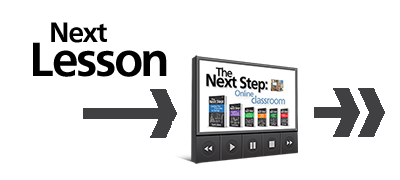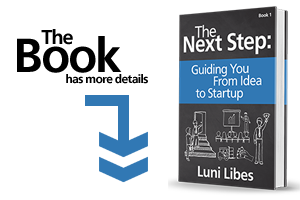Before jumping into The Next Step process, it is best to read through the first book in that series. Do not stop to answer the questions in each chapter in that first reading, but instead focus on the overall process.
There is no one ideal path through the business planning process. You will be iterating through some of the steps multiple times. However, in most cases, the best place to start is in finding a problem to solve, determining who in the world has that problem, and confirming that enough of those people will pay to have the problem solved to make it worthwhile to create a business to bring them a solution.
These lectures cover chapters 4 through 6 of The Next Step: Guiding you from idea to startup, focusing on separating the problem from the solution. It then continues to chapter 7, describing and comparing Steve Blank‘s “Customer Development Model” and Eric Reis’ “Lean Startup” philosophy, and providing “real world” examples of “minimal viable products” (MVPs).
(Total running time: 44 minutes)
Worksheet
Related articles
You’re confusing problem and solution – SpikeLab
In Praise of the Business Plan – Reaction Wheel
Timing
Timing is one of the key reasons startups succeed or fail. While Webvan wasted hundreds of millions of dollars building out an automated warehouse in San Francisco in the 1990s, too early for the eventual demand in online groceries and e-commerce, in the 2020s this is now commonplace.











